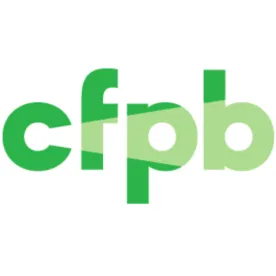What is the status of President Biden’s nominee for CFPB director, Rohit Chopra?
Mr. Chopra’s nomination has moved out of committee and is ready for a floor vote. However, President Biden has indicated that Mr. Chopra’s confirmation will be delayed until the administration fills the FTC vacancy created by the resignation of former FTC Chair Joseph Simons. As Mr. Chopra is currently an FTC commissioner, his departure before Mr. Simon’s replacement is in place would leave Republican FTC commissioners with a 2-1 majority. To avoid this outcome, Mr. Chopra’s confirmation must follow the confirmation of Columbia Law School Professor Lina Khan, President Biden’s nominee to replace Mr. Simons at the FTC. Ms. Khan’s nomination remains in committee and it could take some time – late April or even early May – before the Senate turns to confirming Mr. Chopra.
Importantly, Acting CFPB Director David Uejio, driven by Mr. Chopra’s views and intentions, has wasted little time in launching a major course correction at the CFPB. Although some of the CFPB’s recent actions seem motivated to preserve the status quo until Mr. Chopra arrives, Mr. Uejio has taken numerous active measures to advance a new, Chopra-aligned agenda at the CFPB.
Talk about the recent CFPB actions that illustrate this new agenda?
Where to begin? There has been a spate of policy and rulemaking activity. In addition, our industry contacts are already reporting increased scrutiny during exams, and our contacts at the Bureau similarly report that the number of new investigations is already trending up noticeably and will only multiply. To start with, the CFPB has made clear that its immediate priorities are protecting consumers impacted by the pandemic and promoting racial equality. Many of its recent actions demonstrate the Bureau’s commitment to these new priorities through a combination of tightening oversight of supervised institutions and providing relief to borrowers. For example, between March 31 and April 5, 2021, the CFPB rescinded seven policy statements issued in 2020 providing regulatory flexibility to financial institutions and replaced a 2018 bulletin on supervisory communications that eliminates the use of Supervisory Recommendations; issued a bulletin warning mortgage servicers to be ready for the wave of borrowers that will make loss mitigation requests as they exit pandemic moratoriums and forbearance plans in the fall; and proposed changes to RESPA Regulation X in order to prevent foreclosures on those same borrowers.
The CFPB has also extended the compliance dates for Qualified Mortgage and Debt Collection rules –likely preserving Mr. Chopra’s ability to later revise them. And, showing its return to a “regulation by enforcement” regime, in early March, the Bureau rescinded a 2020 Policy Statement limiting its pursuit of civil penalties for “abusive” acts or practices. In addition, the Bureau has reversed course from the prior administration, indicating it will enforce the Military Lending Act. In late March, Mr. Uejio also issued a statement that small dollar lenders will receive heightened supervisory and enforcement scrutiny, with the Bureau taking enforcement where business models “depend on inability to pay.” This inability to repay scrutiny will also likely be extended to other consumer lending products.
On the fair lending front, in early March, the CFPB issued an interpretative rule clarifying that lenders cannot discriminate based on either sexual orientation or gender identity. It also issued guidance on providing financial services to consumers with Limited English Proficiency. In addition, the Bureau is reinstating Home Mortgage Disclosure Act (HMDA) data reporting requirements, moving forward with implementation of the small business data collection rule, and has joined an interagency RFI to understand what regulatory clarity may be needed around the use of artificial intelligence by consumer finance companies.
Meanwhile, the Bureau’s Research, Markets and Regulations team is studying pressing issues related to housing insecurity and barriers to racial equity in consumer finance. And this is not an exhaustive list! Mr. Uejio has been an active Acting Director, indeed.
What are some of the areas of CFPB focus that lie ahead?
As to protecting consumers impacted by the pandemic, and as the CFPB has already indicated, it intends to use its unfair, deceptive and/or abusive acts or practices (UDAAP) and other authority to scrutinize mortgage servicers closely. The same will be true of student loan servicers, debt collectors and furnishers of credit reporting information, as well as other financial service products and practices. In terms of other areas of focus, Mr. Uejio has specifically called out small dollar lenders as a sector the Bureau will scrutinize. Similar scrutiny on overdraft practices may also return.
As to promoting racial equity in financial services, fair lending and servicing has returned as a top priority of the Bureau. In many respects, the CFPB’s fair lending priorities may dovetail with its objective to protect consumers impacted by the pandemic. For example, the CFPB – through its statements and intent to move forward with the small business data collection rule – has signaled it will use its authority under the Equal Credit Opportunity Act to police discrimination in small business credit (a sector hard hit by COVID-19). In this regard, inquiries into whether financial institutions discriminated against women and minority-owned businesses when offering PPP loans may arise. Such matters will focus on the adequacy of compliance procedures, whether the PPP lending program restricted access to certain protected classes of borrowers, and whether an institution has complied with Regulation B’s requirements for recordkeeping and adverse action notices.
Another such example is fair servicing – for both mortgage and student loans. Here, the Bureau is likely to focus on whether servicers have engaged in sufficient and consistent loss mitigation outreach to protected class borrowers, managed communications with Limited English Proficiency borrowers, and properly considered income from part-time employment, alimony, child support, separate maintenance payments, retirement benefits or public assistance when evaluating income as part of determining eligibility for loss mitigation options.
More generally, the Bureau may return to a more aggressive use of disparate impact theory to establish claims of discrimination against creditors. To this end, users of non-traditional data and/or algorithmic models may face more scrutiny – though the Bureau will continue to balance bias risk against the potential for such alternative approaches to expand access to credit. For lenders utilizing such approaches, it will be important to have put fair lending process around them, including developing appropriate business justifications and conducting outcome testing, as appropriate.
On the rulemaking front, the CFPB seems poised to continue moving toward proposed rules concerning open banking and consumer access to financial data – a step that could bring much needed standardization among the somewhat competing objectives of consumers, banks, fintechs, and data access providers.
What can financial institutions and other service providers do now to manage CFPB risk?
Although the proactive steps will vary from issue to issue, at a high-level, now is the time to ensure that your institution’s change management and governance risk and compliance approaches are robust; its risk assessments and policies and procedures are adequate given the new guidance and rules coming out of the Bureau almost daily; and its customer complaint response procedures are fulsome. Further, complaints should be addressed fully and in a timely fashion, emerging supervisory expectations should be addressed in proactive dialogue with your examiner-in-charge, and Bureau developments should be kept top-of mind through regular coordination with your regulatory and government affairs teams, trade associations, industry peers, and third-party advisors.



 />i
/>i

